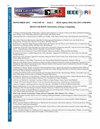A prediction model for heat exchanger fouling factor based on stacking model
IF 1.3
4区 工程技术
Q3 COMPUTER SCIENCE, INFORMATION SYSTEMS
引用次数: 0
Abstract
Given the pressing demand for energy conservation, the petrochemical sector faces increasingly stringent energy-saving mandates. Heat exchangers, essential to this sector, suffer efficiency losses and increased energy consumption due to fouling. To ensure optimal operation of heat exchange systems, regular assessment of solid deposits and the implementation of cleaning schedules are imperative. However, the multitude of influencing factors renders traditional estimation methods unreliable. Consequently, we developed a stacking model to predict the fouling factor of heat exchangers. Specifically, we first constructed fouling factor prediction models using various machine learning techniques, then selected the best-performing models random forest, extreme gradient boosting , and light gradient boosting machine for integration. Finally, the predictions from these three models were fed into a linear regression layer to form the final stacking model. The results indicate that the constructed stacking model significantly enhances the accuracy of fouling factor prediction. This model not only surpasses traditional multilayer perceptron neural network methods but also outperforms the well-performing gaussian process regression. This achievement not only validates the effectiveness of our model but also provides robust support for future research and applications in related fields.基于堆叠模型的换热器污垢系数预测模型
鉴于对节能的迫切需求,石化行业面临着越来越严格的节能要求。热交换器是该行业不可或缺的设备,但却因结垢而导致效率损失和能耗增加。为确保热交换系统的最佳运行,必须定期评估固体沉积物并执行清洁计划。然而,由于影响因素众多,传统的估算方法并不可靠。因此,我们开发了一种堆叠模型来预测热交换器的污垢系数。具体来说,我们首先利用各种机器学习技术构建了污垢因子预测模型,然后选择了性能最佳的随机森林、极端梯度提升和轻梯度提升机模型进行整合。最后,将这三个模型的预测结果输入线性回归层,形成最终的叠加模型。结果表明,所构建的堆叠模型大大提高了污垢因子预测的准确性。该模型不仅超越了传统的多层感知器神经网络方法,而且优于性能良好的高斯过程回归。这一成果不仅验证了我们模型的有效性,也为未来相关领域的研究和应用提供了有力支持。
本文章由计算机程序翻译,如有差异,请以英文原文为准。
求助全文
约1分钟内获得全文
求助全文
来源期刊

IEEE Latin America Transactions
COMPUTER SCIENCE, INFORMATION SYSTEMS-ENGINEERING, ELECTRICAL & ELECTRONIC
CiteScore
3.50
自引率
7.70%
发文量
192
审稿时长
3-8 weeks
期刊介绍:
IEEE Latin America Transactions (IEEE LATAM) is an interdisciplinary journal focused on the dissemination of original and quality research papers / review articles in Spanish and Portuguese of emerging topics in three main areas: Computing, Electric Energy and Electronics. Some of the sub-areas of the journal are, but not limited to: Automatic control, communications, instrumentation, artificial intelligence, power and industrial electronics, fault diagnosis and detection, transportation electrification, internet of things, electrical machines, circuits and systems, biomedicine and biomedical / haptic applications, secure communications, robotics, sensors and actuators, computer networks, smart grids, among others.
 求助内容:
求助内容: 应助结果提醒方式:
应助结果提醒方式:


